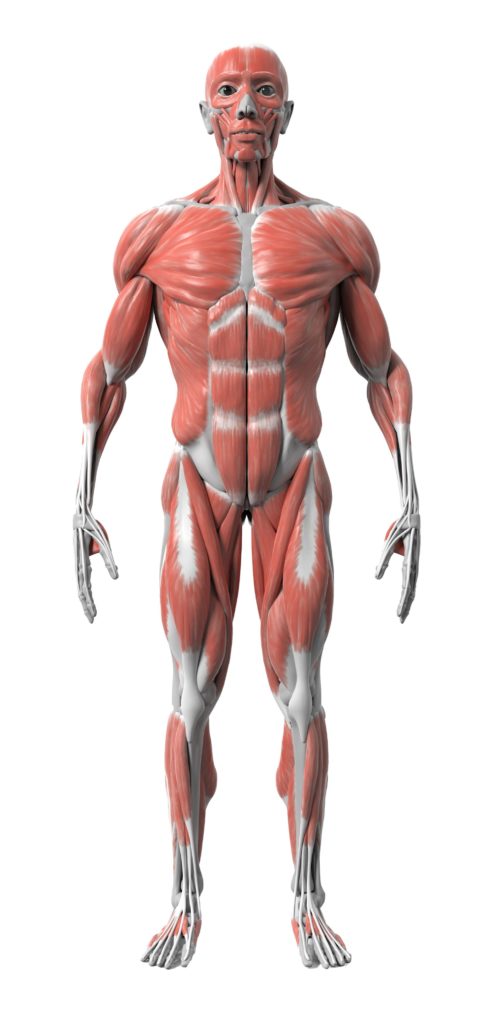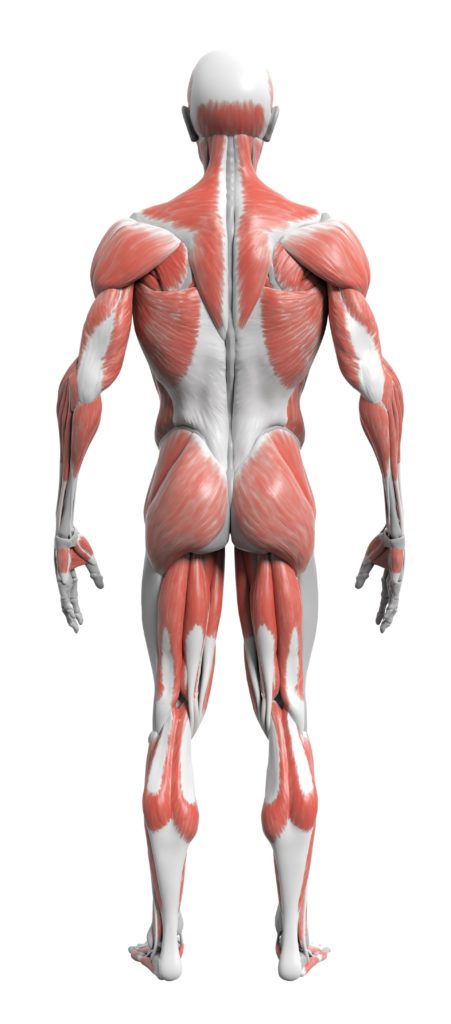We’re going to define Static Posture as how we choose to carry ourselves. Whether standing or seated, our static posture can be a basis for identifying muscle imbalances. Performing a static posture assessment can be a powerful tool in optimizing performance and fitness.
As we grow and live our lives, many factors contribute to our posture. Our lifestyles, jobs, hobbies, previous injuries, and habits all affect our posture over time. Being able to recognize variations in optimal posture can identify muscle dysfunctions, weakness, and overdevelopment.
The concept of “optimal” static posture is somewhat arbitrary, however, and static posture is just a stepping stone towards asking the right questions. When a person is completely at rest they are subject to the simple law of gravity and your body will take the path of least resistance towards the ground.
Static posture provides clues we can follow to identify weakness. The Static posture assessment is a great tool to use in conjunction with other assessments to help paint a bigger picture when assessing performance.
What is a muscle imbalance?
A muscle imbalance is when the muscles surrounding a joint have altered their optimal function. Science is still determining whether this is a neurological function, a mechanical function or both.
An easy example of a muscle imbalance is at the elbow. The biceps and triceps are the muscles surrounding the elbow forming a
Some theorize that the overdeveloped muscle in an
You might notice in this elbow example an individual who stands with slightly bent arms. That could be a manifestation of this muscle imbalance in a person’s static posture. Regardless, in altered posture and performance positions, certain muscles are going to be in a shortened position while others remained lengthened. This might reinforce improper movement habits.
How does a muscle imbalance happen?
Our bodies adapt to stress and repetition. When we perform the same tasks or remain in similar positions for long periods of time, our bodies will reinforce these positions with muscle and body tissue.
Let’s say you’re a carpenter, much of your time is spent holding tools in front of your body, hammering, screwing, adjusting. Constantly using these muscles will cause them to overdevelop leading to imbalances.
Students often suffer from posture imbalances due to constantly being hunched over a desk, or looking down at a cell phone, and carrying around heavy backpacks. Athletes tend to develop imbalances as their sport requires the use of specific muscles all the time. Tennis players develop tennis elbow, Golfers develop golfers elbow etc.
What to look for
We can break down the body into several sections called Kinetic Checkpoints which can help us identify a baseline for our posture. Our head, shoulders, hips, knees, feet, midline are all important checkpoints to identify when assessing possible deviations from optimal posture.
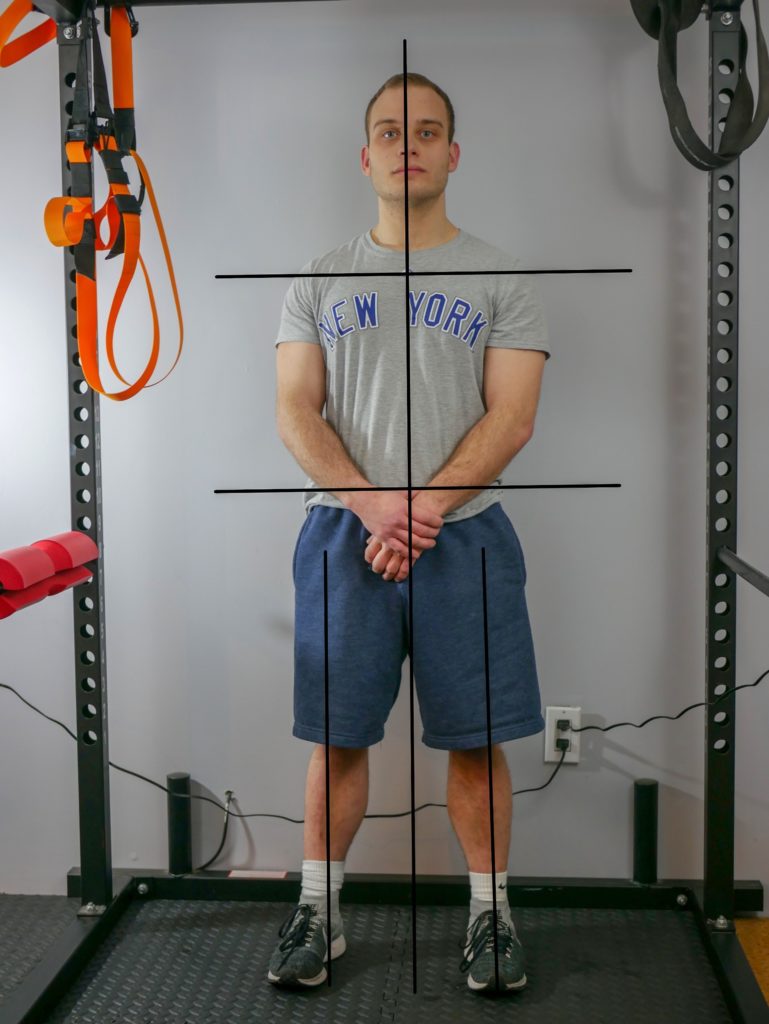
Front view of the kinetic checkpoints. Even shoulders, aligned hips, and legs.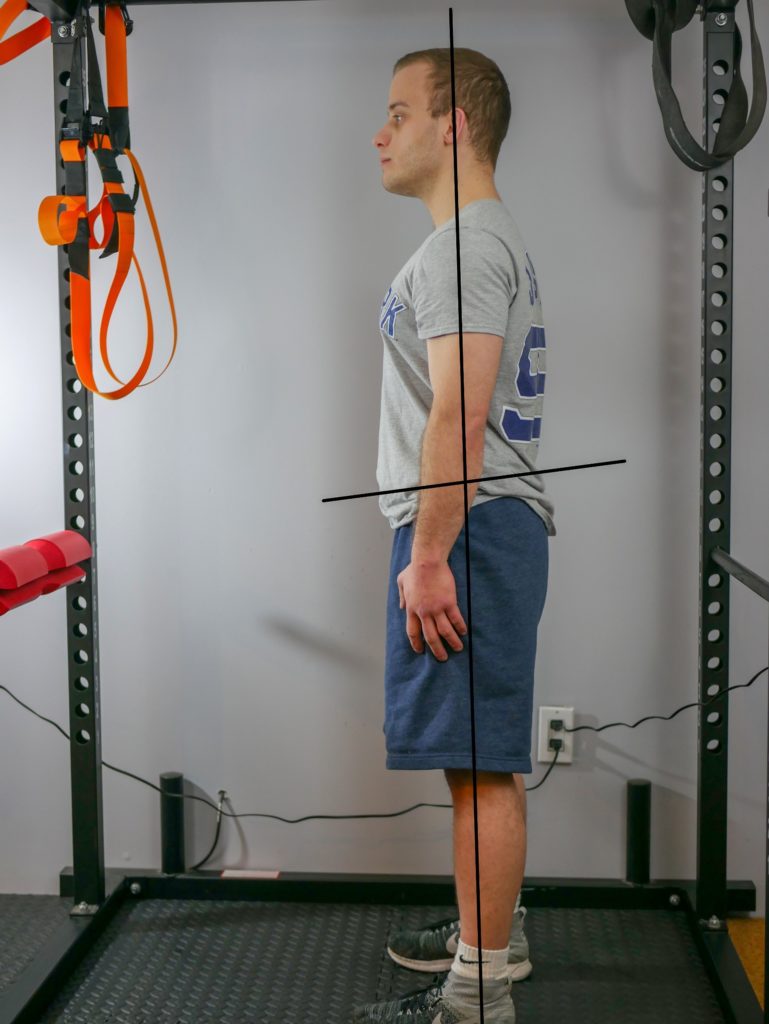
Lateral view of the kinetic checkpoints. Appropriate pelvic tilt, aligned head, torso, feet.
When we separate the body into 3 sections, it becomes manageable to identify dysfunction.
The Janda approach is a commonly utilized method which segments the body to identify issues. Upper Crossed Syndrome, Lower Crossed Syndrome, and Pronation Distortion Syndrome are all derived from the Janda Approach. In a dysfunctional posture or movement, our muscles are in a sub-optimal shortened position, while opposing muscles are in a lengthened position.
Solutions Table:
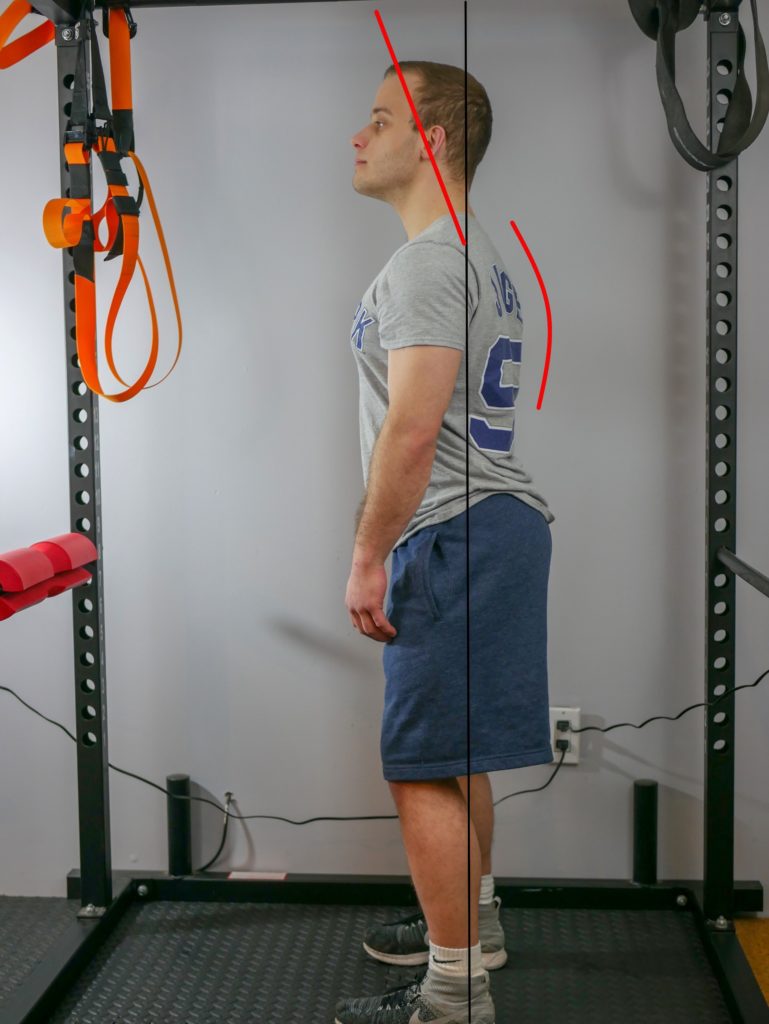
Upper crossed syndrome: Head shifted forward, shoulders rounded forward, forward weight shift. Rounded upper back.
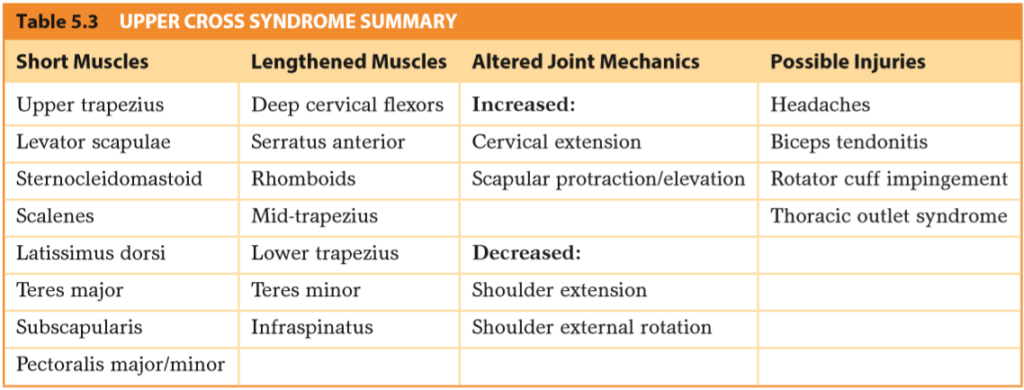
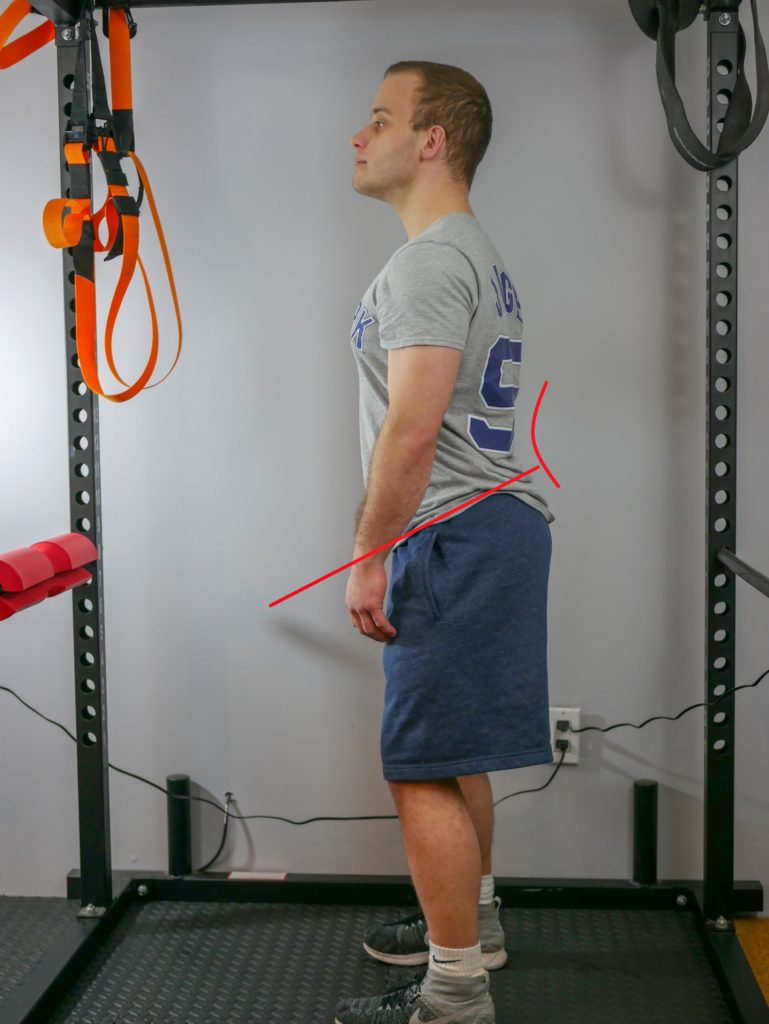
Lower Crossed Syndrome: Forward weight shift, excessive lower back curvature, butt sticking out. Common in athletes who train lower back often, people who sit often during the day.

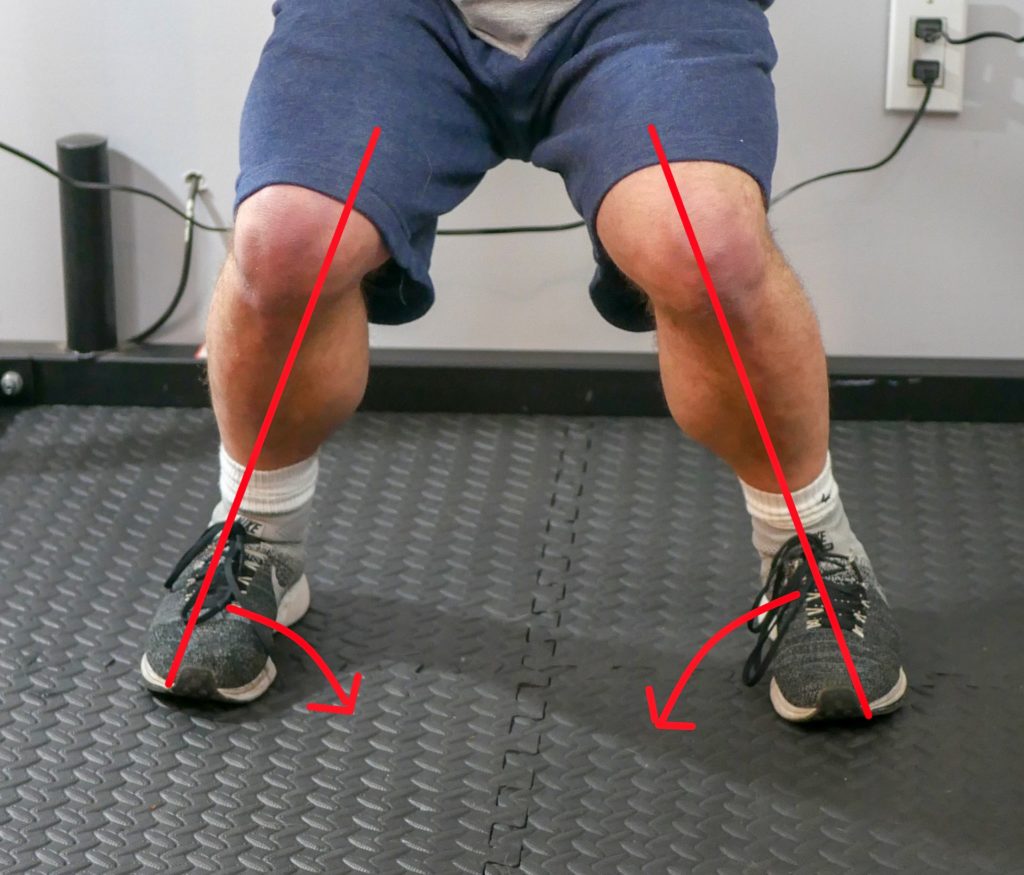
Pronation Distortion Syndrome: Flat feet, knees bowing in. Leads to many conditions such as shin splints, plantar fasciitis, patellar tendonitis, low back pain.
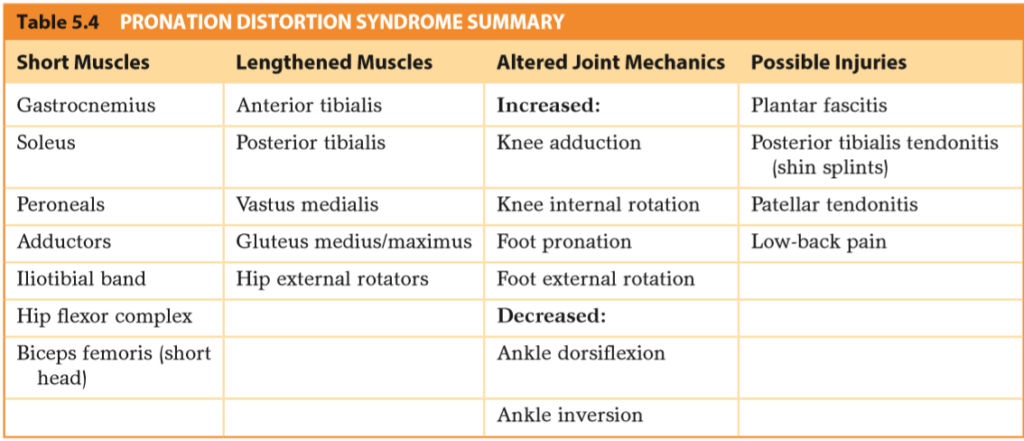
*Solutions Table from NASMs guide to Corrective Exercise and are for educational purposes only

